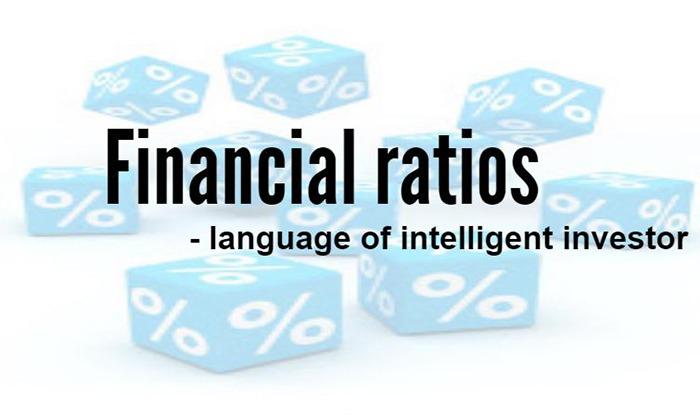Listen to this:
It is said – Investing in stocks is like owning a part of the business.
If you want to be successful in business, you must know how to analyse financial ratios and draw a conclusion about the financial health and potential of a business.
To analyse financial ratios for the company on a standalone basis may not have any relevance so it is always advisable to make an interfirm and intrafirm comparison.
- How to analyse Financial Ratios?
- Days Inventory Outstanding (DIO) or Inventory days
- Learn about financial ratios with Ratio Analysis Made Easy by Market Experts
- Days Sales Outstanding (DSO) or Receivable days
- Days Payable Outstanding (DPO) or Payable days
- Cash Conversion Cycle
- Debt Equity Ratio
- Interest coverage ratio
- Gross margin
- Operating margin
- Return on Equity
- Free Cash Flow to Sales
- Bottom line:
When you come across a situation where you are comparing a company which is in an initial phase earning a revenue of Rs 50 crore and comparing it with a matured company earning revenue of Rs 5000 crore.
In such a scenario it is not an apple to apple comparison. So to analyse financial ratios, make proper comparative analysis meaningful.
How to analyse Financial Ratios?
To determine the financial health of a company, one needs to analyse financial ratios given below –
Days Inventory Outstanding (DIO) or Inventory days
It is calculated as-
DIO= (Average Inventory/COGS) x 365
It indicates an average time required by a company to convert its inventory into sales.
A DIO of 30 days indicates that the company held the stock for 30 days on an average before converting it to sales.
This ratio is industry-specific and should be compared to peer companies to get the real picture.
Say DIO of 180 days may look horrible for a retail industry but the same figure is ideal in case of real estate sector.
The lower is the ratio, better is the company’s efficiency and profitability.
A low DIO could be achieved either by tight inventory management (good) or by reducing prices (bad).
Learn about financial ratios with Ratio Analysis Made Easy by Market Experts
On the other hand, if the company’s inventory has increased and sales have come down, it shows that the company is not able to sell its product and hence it is pilling up
Days Sales Outstanding (DSO) or Receivable days
It is calculated as-
DSO= (Average Receivable/Sales) x 365
It indicates company’s collection period i.e. time taken by a company to convert its receivables into cash. A DIO of 30 days indicates that company takes 30 days on an average to receive payment on its credit sales.
A business capable of converting its receivables into cash quickly is a positive sign of company’s financial health and efficiency since cash is a king in business.
A lower DSO number is preferable which implies that it takes a company fewer days to collect its accounts receivable.
On the other hand, a high DSO number indicates that a company is selling its product to customers on credit and taking a long time to collect the money.
Days Payable Outstanding (DPO) or Payable days
It is calculated as-
DPO= (Average Payable/COGS) x 365
It measures the average number of days a company takes to make payment to its suppliers. It shows company’s payment policy.
A DPO of 30 days indicates that the company takes 30 days on an average to make payment to suppliers over its credit purchase.
A company with higher days of payables than its competitors means the company is getting better credit terms from their vendors than its competitor.
Higher the number, better is the company’s efficiency and shows the company’s ability to delay payment and conserve cash.
Cash Conversion Cycle
It measures the number of days which a company takes to convert its raw materials into the final cash flow. It is also known as the cash conversion cycle.
To analyse financial ratios, calculate –
Cash Conversion Cycle= DSO+DIO-DPO
It is a measure of management’s effectiveness i.e. how well a business manages its cash.
The lower the better and a great way to compare competitors.
Debt Equity Ratio
It is used to measure company’s financial leverage.
It’s a measure of the fund provided by outsiders to the fund financed by the company’s insider (equity shareholder) to finance a company’s asset.
The lower the ratio, the more conservative is the financial structure of the company. It is also known as leverage or gearing.
However, it is important to look into the industry analysis in which the company operates because it can be high in real estate or in capital-intensive businesses while low in companies like personal computer manufacturers.
It should not be viewed on a standalone basis and thus a comparative analysis should be made.
Interest coverage ratio
It’s a measure of company’s ability to fulfill its interest obligation on its debt in a timely manner.
It is calculated as-
Interest coverage ratio= EBIT/Interest charges
It’s an important tool to measure company’s ability to meet its debt obligation.
Higher the better.
Anything below 2.5x is a warning signal.
Gross margin
It is a profitability ratio which compares the gross margin of company’s business to net sales.
It is calculated as-
Gross margin(%)= (Revenue – Cost of Goods Sold)/ Revenue)x100
It shows the company’s profitability which it generates after selling its inventory.
The higher the percentage, the more the company retains on every rupee of sales after meeting its cost.
Higher gross margin also reflects greater efficiency in converting raw material to income.
Operating margin
It shows how much revenue is left after meeting its operating cost.
It is calculated as-
Operating margin(%)= (Operating income/revenue)x100
It is also known as operating profit margin or return on sales (ROS).
This ratio is important especially to creditors and investors as it shows how strong and profitable company’s operations are.
Say if a company receives 30% of its revenue from its operation indicates that the company is running the business smoothly and efficiently.
Return on Equity
It measures the rate of return for its equity shareholders and is one of the most important criteria for evaluating management effectiveness.
It is calculated as-
ROE=Net Income/Shareholder’s equity
Higher ROE around 15-25% is generally considered good.
But in order to get a more clearer picture, it’s important to break it down further to get a deep insight into how the company achieves its ROE.
This can be achieved from DU Pont formula of ROE stated below-
ROE= Net profit margin x Asset turnover x Equity multiplier =(Net Income/Sales)x(Sales/Total Asset)x(Total Asset/Shareholders Equity)
Read More: DuPont Analysis: Interpretation, Analysis, Formula, Calculator
Splitting the ROE into three parts makes it easier to understand changes in ROE over time.
For instance, if net margin increases, higher sales would add more money thus increasing its ROE.
Similarly if Asset turnover increases, the firm is able to generate more sales for every unit of asset owned, thus again increasing overall ROE.
Lastly, increase in financial leverage would indicate that firm is using more debt to finance its activities. So increase in the proportion of debt also leads to higher ROE.
However, it should be noted that if the firm increases it leverage too much, it would lead to an increase in the cost of debt, thus decreasing its ROE.
Free Cash Flow to Sales
To analyse financial ratios., find out what percentage of sales is converted directly to FCF.
Any company that has FCF/S ratio higher than 10% is generating good FCF.
It tells you that the company is very profitable and has a strong set of operations.
Any company that can generate FCF smoothly is able to hand out dividend easily and reinvest and seek opportunities for further expansion and other important activities.
It is important to look into these figures for a period of at least 3-5 years to get a better insight into the company.
However, peer comparison is also equally important.
Bottom line:
Most of the time these figures are not provided to us, so an investor should learn to analyse financial ratios in a more concrete way.
It is not easy to remember all the figures of financial statements, so a sophisticated investor talks in terms of these ratios. Hence it’s important to be financially literate by educating yourself and you can also learn to speak in ratios.








